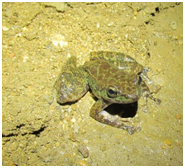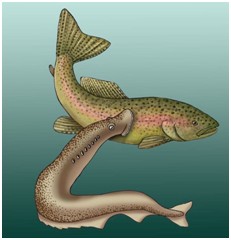TOP 5 TAKKAR NEWS OF THE DAY (15th APRIL 2023)
POLITY AND GOVERNANCE
1. PREVENTIVE DETENTION LAW
TAGS:GS-II-POLITY AND GOVERNANCE
THE CONTEXT:Recently, the supreme court said that preventive detention laws in India are a colonial legacy with great potential to be abused and must be used only in the rarest of rare cases.
THE EXPLANATION:
What is preventive detention?
- Preventive detention is when a person is held in police custody only on the basis of a suspicion that they would conduct a criminal act or cause harm to society. The police have the authority to hold anyone they suspect of committing a criminal offence.
- The police have the ability to make arrests without a warrant or a magistrate’s authorization in certain cases. Preventive detention was undoubtedly an important part of the colonial legal system in India.
- Surprisingly, the framers of the Indian Constitution, who had been the most oppressed by the preventive detention legislation, did not fail to provide the statutory validity to the same in independent India.
- The word detention simply means when any person is arrested or taken into custody. It can be legal as well as illegal. But when it comes to the security of the state and benefit of the society, there comes a new term which is Preventive Detention.
There are commonly two types of detentions:
- Punitive detention, which means detention as a punishment for the criminal offence. It occurs after an offence is actually committed, or an attempt has been made towards the commission of that crime.
- On the other hand, preventive detention means a person’s incarceration in advance to prevent any further possibility of the commitment of crime or its engagement. Preventive detention is, therefore, an action taken on the basis of apprehension that the person in question might do some wrongful act.
HEALTH ISSUES
2. CHAGAS DISEASE
TAGS:GS-II-HEALTH ISSUES- PRELIMS
THE CONTEXT: The World Health Organization (WHO) is observing World Chagas Disease Day April 14, 2023 to raise awareness about this little-known disease that affects millions every year, especially the poor population and people in Latin America.
THE EXPLANATION:
- In 2019, the 72nd World Health Assembly dedicated this day to the disease. This year’s theme is “time to integrate Chagas disease into primary health care”.
What is Chagas disease?
- Chagas disease, also called American trypanosomiasis, is a communicable parasitic disease that has infected 6-7 million people and claims around 12,000 lives every year across the globe.
- It is caused by the parasite protozoan Trypanosoma cruzi. The parasites are mainly transmitted by a family of bugs called ‘triatomines’, also known as the ‘kissing bug’. These blood-sucking bugs transmit the disease from infected to healthy individuals through bites and by defecating on them.
- The systemic, chronic disease manifests as fever, headaches, rashes and inflammatory nodules, nausea or diarrhoea and muscle or abdominal pain. A majority of the patients (70-80 per cent) show an asymptomatic clinical course throughout their lives, making early detection challenging. It is often referred to as the “silent and silenced disease”.
- An individual can also contract this disease through congenital transmission (pregnant woman to their baby), blood transfusions, organ transplantation, consumption of uncooked food contaminated with faecal matter of infected bugs or even accidental laboratory exposure. The disease, however, cannot propagate by casual contact with infected humans or animals.
- The disease is named after physician Carlos Chagas who first detected it in a Brazillian child in 1909.
ENVIRONMENT AND ECOLOGY
3. NEW FROG SPECIES FOUND IN MEGHALAYA SIJU CAVE
TAGS: GS-III- ENVIRONMENT- SPECIES IN NEWS
THE CONTEXT: Researchers from the Zoological Survey of India (ZSI) have discovered a new species of frogs from deep within the Siju cave in the South Garo Hills district of Meghalaya.
THE EXPLANATION:
- The ZSI team named the new cascade species Amolops siju after the cave from where this discovery was made, according to a press note by the researchers. Siju is a four-kilometre-long natural limestone cave.
- Cascade Frogs are named so because of their preference for small waterfalls or cascades in flowing hill streams.
- The genus Amolops is one of the largest groups of ranid frogs (family Ranidae) with currently over 70 known species that are widely distributed across northeast and north India, Nepal, Bhutan, China, through Indochina, to the Malaya Peninsula.
- The discovery of new species from a cave is very rare. This is the second time such a discovery has been made in India — the first being the discovery of the Micrixalus spelunca in 2014 from a cave in Tamil Nadu
- The specimens of Amolops siju were collected in January 2020 during a cave expedition by the ZSI team. The tissue samples of the specimen were subjected to molecular studies to ascertain their specific identity from the other known species of cascade Amolops frogs.
- Based on the morphological, molecular and spatial data, the team concluded this frog from the Siju cave was new to science and decided to name the new species after the cave.
- Although the specimens were collected 60-100 metres from the cave entrance and the dark zones beyond 100 m of the cave entrance, the team did not find any troglobitic or cave-adapted modification, suggesting that this species of frog is not a permanent resident of the shelter.
4. WHAT IS CRAB NEBULA?
TAGS: GS-III- SCIENCE AND TECHNOLOGY- PRELIMS
THE CONTEXT: Recently, scientists have mapped the iconic Crab Nebula’s magnetic field in greater detail than ever before using NASA’s latest X-ray telescope.
THE EXPLANATION:
- The Crab Nebula is the remnant of a massive stellar explosion, or supernova, that occurred in the year 1054 and left behind a dense object called the Crab Pulsar with a mass about twice that of Earth’s sun. This nebula is one of the most thoroughly studied cosmic objects, but new observations suggest that it’s far more complex than scientists had thought.
- In the 1970s, Weisskopf, now an emeritus astronomer at NASA’s Marshall Space Flight Center in Huntsville, Alabama, and his colleagues measured X-ray polarization from the Crab Nebula to understand its extreme environment and found that Crab has an average polarization of about 20%.
- The findings indicate that the X-rays in the Crab Nebula originate from the outer magnetic field region, known as the “wind” region. However, the exact location and mechanism of this process are yet to be determined.
GOVERNMENT SCHEMES IN NEWS
5. A-HELP(ACCREDITED AGENT FOR HEALTH AND EXTENSION OF LIVESTOCK PRODUCTION) PROGRAMME
TAGS: GS-II-GOVERNMENT SCHEMES AND INTERVENTIONS
THE CONTEXT:Recently, the ‘A-HELP’ (Accredited Agent for Health and Extension of Livestock Production) programme was launched in the State of Uttarakhand. It is an initiative of the Union Ministry of Fisheries, Animal Husbandry & Dairying and the Ministry of Rural Development.
THE EXPLANATION:
- ‘A-Help’ are community-based women activist groups who do tasks like assisting veterinarians in local departmental activities, helping cattle rearers to get loans for entrepreneurship development, filling applications.
- Under the A-Help scheme envisaged by the Government of India, women have been selected to strengthen livestock related activities in remote rural areas. They help in implementing various schemes and providing information to the farmers at the ground level.
- Under this,trained A-Help workers will contribute significantly in prevention of various infectious diseases in animals, artificial insemination, animal tagging and animal insurance under Rashtriya Gokul Mission.
VALUE ADDITION:
About Rashtriya Gokul Mission
- The “Rashtriya Gokul Mission” aims to conserve and develop indigenous breeds in a focused and scientific manner.
- The potential to enhance the productivity of the indigenous breeds of India through professional farm management and superior nutrition is immense, for this it is essential to promote conservation and development of indigenous breeds.
- The Rashtriya Gokul Mission is a focussed project under National Programme for Bovine Breeding and Dairy Development.
- The Mission will be implemented with the objectives to:
- Development and conservation of indigenous breeds
- Undertake breed improvement programme for indigenous cattle breeds so as to improve the genetic makeup and increase the stock;
- Enhance milk production and productivity;
- Upgrade non descript cattle using elite indigenous breeds like Gir, Sahiwal, Rathi, Deoni, Tharparkar, Red Sindhi
- Distribute disease-free high genetic merit bulls for natural service.

